Dutch Beverages: Basic Overview
Common Ingredients
Common Preparing Methods
Key Taste
Drinking Etiquette
Culinary Festivals
Influence and Fusion
Classifications of Dutch Beverages
-
Alcoholic
Dutch alcoholic beverages are typically made from grains, especially wheat.
Their alcohol content ranges from light to strong.
Beer, distilled liquors, and liqueurs are popular options in the Netherlands.
Many Dutch alcoholic beverage brands are globally famous.
-
Non-Alcoholic
Dutch non-alcoholic beverages include soft drinks, herbal tea, and rich, creamy beverages with dairy products.
Most of these beverages are sweet and served hot or at room temperature.
They go well with desserts, snacks, and pastries.
Dutch beverages encompass many well-known drinks in the Netherlands, presenting numerous traditional and modern tastes from the Netherlands.
Now, I invite you to discover the basic features of traditional drinking customs in the Netherlands and the global appeal of Dutch beverages.
Next, I will show you 22 alcoholic and non-alcoholic beverages that locals love to savor, especially with classic Dutch specialties. You will also learn about the special features of the beverages in the Netherlands.
So, are you ready to join me in exploring this refreshing discovery of Dutch culture from the first to the last sip? The 22 best Dutch beverages are waiting for you!
22 Delicious Dutch Beverages
The Netherlands is home to 22 excellent beverages, and I will provide you with their detailed descriptions. You can navigate this content more easily by using interactive filters related to popularity, ingredients, tastes, and preparation methods.
Also, check out extra filters based on traditional and national beverage options.
Jenever
- Alcoholic
- National
- Traditional
Jenever is a grain-based spirit with deep roots in the Netherlands. Its alternative names are Genever, Genièvre, Peket, Dutch gin, and Geneva gin.
Classic jenever is a blend of rye, maize, malted barley, and juniper flavor. The two main jenever varieties, old and young jenever, both have a neutral taste like vodka infused with notes of light juniper and malt, but they have different serving ways.
Young jenever (jonge jenever) often goes either chilled or at room temperature, while old jenever (oude jenever) is only served the latter way. Dutch people enjoy both versions with a tulip-shaped shot glass.
Sometimes, jenever is mixed with sugar, tonic water, or beer. In terms of accompaniments, this Dutch alcoholic beverage goes well with hearty dishes like uitsmijter, bitterballen, rookworst, or kroket.
Dutch Beer
- Alcoholic
- Traditional
Dutch beer is primarily centered around pale lagers brewed from wheat. These brews earn a global presence: 50% of the world’s beer comes from the Netherlands, according to a USDA report on the Dutch beer market.
Heineken, Grolsch, and Bavaria are household names that illustrate the glory of Dutch beer. Among them, Heineken is the world’s second-largest brewer with a universal appeal.
Nevertheless, there are other beers with regional preferences, like Bavaria, Budels, and Dommelsch in North Brabant.
In the eastern province of Overijssel, Grolsch is the most popular. Dutch Gold, a cost-effective imported pilsner lager, usually appears in Ireland.
A special mention goes to Herfstbok, a potent, dark lager. Known as autumn bock beer, this seasonal variety offers a unique twist on the Dutch brewing tradition.
Dutch beer is a versatile beverage that can accompany various dishes, such as lekkerbekje, patatje oorlog, and tosti.
Dutch Soft Drinks
- Non-Alcoholic
- Traditional
Dutch soft drink is popular with people of all ages. A common option is AA Drink, a sports drink from United Soft Drinks, a company that also produces London, Raak, Kindercola, and Bar-le-Duc.
On the other hand, Royal Club offers various soft drinks and juices for adults. Other notable names are 3ES and B52, both belonging to Swinkels Family Brewers.
Sisi produces many fruit-flavored drinks, from carbonated beverages and fruit drinks to citrus sodas.
All these Dutch beverages are ideal for light dishes and desserts, from hagelslag and ontbijtkoek to appelflap and stroopwafel.
Warme Chocolademelk
- Non-Alcoholic
- Traditional
Warme chocolademelk is the Dutch version of hot chocolate, a universally beloved drink originating in Mesoamerica. It is prepared by heating chocolate with cocoa powder, hot milk, and a sweetener.
Many Dutch restaurants and cafes offer hot chocolate. Local households usually consume Chocomel, a ready-to-drink hot chocolate product made in Belgium.
Warme chocolademelk comes with a rich and bitter taste, so sweet treats like stroopwafel, appelflap, and wentelteefjes are excellent accompaniments.
Koffie Verkeerd
- Non-Alcoholic
- Traditional
Koffie verkeerd is a coffee-based beverage from the Netherlands. A type of café au lait, it consists of coffee or instant coffee, milk, and cream.
Koffie verkeerd has a humorous name that translates to “incorrect/ wrong coffee,” referring to the fact that this beverage contains more milk than coffee.
This sweet and creamy Dutch coffee-based beverage is well-known t across Europe. Its taste is close to other European classics, including grand crème, German milchkaffee, Swiss café renversé, and caffè latte.
Dutch café au lait is perfect for breakfast or a mid-morning snack, with accompaniments like hagelslag, ontbijtkoek, or speculoos.
Verse Munt Thee
- Non-Alcoholic
- Traditional
Verse munt thee is a Dutch beverage made by steaming fresh tea and mint leaves. These ingredients create a soothing aroma and taste, especially when paired with honey and lemon.
Dutch mint tea is especially popular on a cold day thanks to its warmth and comfort. Light dishes like pastechi and Hollandse nieuwe go well with this fragrant drink.
Advocaat
- Alcoholic
- Traditional
Advocaat, or advocatenborrel, is a creamy Dutch liqueur that emerged in the 17th century. Its main ingredients include egg yolks, sweeteners, aromatic spirits, brandy, vanilla, cream or condensed milk, and, sometimes, egg whites.
Advocaat offers a smooth, custard-like consistency and alcohol content between 14 to 20%. Dutch people utilize it as an apéritif, a digestif, or an ingredient in desserts and cocktails.
Advocaat comes in jars and wide-mouth bottles. This rich and creamy beverage is famous across Europe, with the Netherlands and Belgium as the major producers.
The best way to serve advocaat is to pair it with whipped cream or cocoa powder, but snacks like oliebollen or tompouce also make superb accompaniments.
Korenwijn
- Alcoholic
- Traditional
Korenwijn, or corenwyn, is a Dutch spirit and a variant of jenever. It is distilled from grains like barley, maize, or rye, hence its name; Korenwijn means “corn wine.”
This jenever variant has an alcohol content of 38% and a malt wine volume of up to 51% or even higher. Typically aged in an oak cask, korenwijn ranges from colorless to shades of light brown or yellow.
Dutch people often sell korenwijn in 0.5 or 1-liter earthenware jars. A true sample of this spirit must be 100% grain-based, contain at least 20 grams of sugar per liter, and only feature natural flavorings.
Like jenever, korenwijn goes well with savory dishes, such as bitterballen, uitsmijter, kroket, and rookworst.
Curaçao
- Alcoholic
- Traditional
Curaçao is a Dutch liqueur named after an island in the Caribbean. Its signature balance of bitter and sweet flavors comes from the dried peels of laraha (Curaçao oranges).
Though colorless by nature, Curaçao is often dyed in vibrant hues, with blue and orange being the most popular. Its alcohol content ranges between 15 and 40%.
Curaçao comes in many flavors, like coffee, chocolate, rum, and raisin. Such versatility makes this liqueur a favorite ingredient in cocktails.
With its sweet, citrus-flavored profile, Curaçao can complement desserts or fruity dishes, like appelflap or poffertjes.
Schrobbelèr
- Alcoholic
- Traditional
Schrobbelèr, or jans, is a herbal liqueur from the Netherlands, with Jonkers Distillers as its producer. With an ABV of around 21.5%, it is quite mellow and excellent to sip neat over ice.
43 different herbs go into schrobbelèr, resulting in a smooth, light, amber-colored liqueur. Dutch people sell it in stone bottles and traditionally pair it with coffee.
Schrobbelèr is the go-to drink during Carnival festivities. Try pairing it with savory dishes like stamppot or snert.
Kopstootje
- Alcoholic
- Traditional
Kopstootje is a mixed cocktail from the Netherlands. Playfully dubbed the “Little Head Butt,” it is made with jenever and served in a tulip-shaped glass.
To serve kopstootje, a guest bends over the glass with their hands behind their back and slurps the top of the drink, then consumes the remaining cocktail as a shot, with a beer on the side. This serving ritual is a Dutch bar staple.
Savory snacks like bitterballen, frikandel, and lekkerbekje are a good match for this cocktail.
Oranjebitter
- Alcoholic
- Traditional
Oranjebitter is a Dutch liqueur made with sugar, liquor, and orange peels. This bitter and spicy beverage appeared in the 17th century and hit its stride in popularity after 1814.
People in the Netherlands usually serve oranjebitter on King’s Day (April 27) or any celebration. Many types of sparkling wine, cocktails, and soda use it as an ingredient.
To complement the bitter taste of oranjebitter, enjoy it with sweet pastries like oliebollen and paasbrood.
Stroopwafel Liqueur
- Alcoholic
- Traditional
Stroopwafel is a Dutch liqueur produced by the Van Meer company. It shares the same name as the Dutch waffle cookie due to having the same ingredients and flavors, boasting the richness of caramel with nutty undertones and hints of cinnamon.
With an ABV of 14.7%, stroopwafel is a flavorful addition to coffee, desserts, tea, or cake. Try mixing stroopwafel with a White Russian, coffee, or apple cider for a spiced candy-apple cocktail.
Besides its namesake snack, stroopwafel goes well with sweet treats like ontbijtkoek, paasbrood, and tompouce.
Dutch Brandy
- Alcoholic
- Traditional
Dutch brandy, also known as vieux, is a distilled spirit from the Netherlands with an alcohol content of at least 35%. Since its introduction in the early 20th century, Dutch brandy has received much love for its sweet, warm, and smooth taste.
Distilled from grains or molasses, Dutch brandy comes in different colors, from white to dark brown. Herman Jansen group is the most famous brandy producer in the Netherlands, with Plantiac as its flagship product.
In terms of drinks, Dutch brandy pairs beautifully with coffee or cola. For dishes, this famous alcoholic beverage should accompany savory dishes like hachee or stamppot.
Dutch Wine
- Alcoholic
- Traditional
Dutch wine is an alcoholic beverage made from either white or red grapes. Despite its ancient roots, wine-making in the Netherlands only started gaining international popularity in the 1970s.
Nowadays, you can find about 180 commercial vineyards across this European country, especially in the provinces of Gelderland and Limburg. These vineyards yield wines with a pleasantly soft mouthfeel and a bitter hint.
Most brands of Dutch wine are suitable for pairing with rich dishes, such as hachee, Hollandse nieuwe, and stamppot.
Dutch Vodka
- Alcoholic
- Traditional
Dutch vodka is a distilled liquor made of wheat, potatoes, and rye. This Netherlands-born spirit enjoys admiration worldwide and comes in many splendid brands.
A popular Dutch vodka name is Bols, known for its slightly sweet, clean taste and mild spiciness. Meanwhile, Bong Spirit vodka is admired for its clean, mellow flavor with a clean mouthfeel and a spicy aroma.
Ketel One is toasty and sweet, with a smooth texture and lingering peppery notes. Ursus is triple-distilled, resulting in fruity, spicy, and slightly smoky tones.
On the other hand, Van Gogh vodka offers a slightly spicy flavor, a mild heat aftertaste, and a silky, slightly oily body. Vox is smooth, yet the flavor lingers without a clean finish.
These Dutch vodka brands are a match made in heaven for both light and savory dishes, such as Hollandse nieuwe, kibbeling, and patatje oorlog.
Parfait D’amour
- Alcoholic
- Traditional
Parfait d’amour is a popular liqueur in the Netherlands. Despite its origin in France, it is a popular cocktail component worldwide.
With a Curaçao base, parfait d’amour is known for its dazzling purple color. An excellent beverage made with this liquor is the modern Takumi’s Aviation cocktail.
In case you want to enjoy parfait d’amour with Dutch dishes, go for light, delicate treats like poffertjes or Wentelteefjes.
Gruit
- Alcoholic
- Traditional
Gruit, also known as grut or gruyt, is a unique beer brewed with herbs from the Netherlands, Belgium, and Northeastern Germany.
The list of herbs used in gruit changes from place to place, but yarrow, sweet gale, common heather, ground ivy, horehound, and mugwort are popular options.
These herbs are brewed with spices, hops, and even more herbs, resulting in a citrusy and herbal flavor. Jopen Koyt is an outstanding Dutch gruit brand based in Haarlem.
Rustic and hearty dishes are ideal for bringing out the unique taste of gruit, with stamppot, snert, and rookworst as favorite options.
Anijsmelk
- Non-Alcoholic
- Traditional
Anijsmelk is a Dutch hot beverage made with milk, anise seed, and sugar. It is famous for its comforting flavor and sleep-inducing effect.
Due to the spread of Dutch settlers and colonists, anijsmelk is also popular in Michigan (US) and South Africa. This hot beverage is usually sold in powder sachets these days.
Many Dutch people like to serve anijsmelk with spiced or sweet snacks like speculoos or pepernoten.
Bruidstranen
- Alcoholic
- Traditional
Bruidstranen is a unique liqueur from the Netherlands. It is a smooth and citrusy beverage created from oranges, silver leaf, edible gold, distilled water, alcohol, sugar, and walnuts.
You’ll find bruidstranen in Dutch wedding traditions, where the bride may pour the alcohol if displeased with something. The floating gold flakes give it its poignant name: Bruidstranen means “tears of the bride” or “bridal tears.”
Not just a simple drink, bruidstranen carries symbolic weight, representing the bride’s farewell to her youth and family home. This spiced beverage goes well with rich dishes like tompouce, paasbrood, and bitterballen.
Kwast
- Non-Alcoholic
- Traditional
Kwast is a hot drink from the Netherlands, renowned for its remedial properties. Its main ingredients are lemon, honey, and alcohol (like rum, whisky, or brandy).
As you sip hot kwast from a mug on a cold day, you’ll warm up and receive a boost of vitamin C for your system. Kwast is especially popular in autumn and winter; Dutch people suffering from a cold usually consume it.
As a tangy beverage, kwast goes well with snacks and light dishes like tosti, appelflap, and kroket.
Kandeel
- Alcoholic
- Traditional
Kandeel is a mulled wine from the Netherlands with a thick texture similar to an eggnog. This sweet beverage uses milk, eggs, and alcohol.
With roots back to the 13th century, kandeel has a rich tradition associated with maternity. It was served to women after childbirth and a cherished gift to expecting mothers.
Did you find this ritual aspect of kandeel fascinating? I will show you more interesting facts about Dutch beverages in the next section.
What Are Interesting Facts About Dutch Beverages?
Below are the five good-to-know features of the Dutch drink scene: historical depth, influences from other countries, colorful festivals, the role of beverages in meal structure, and popular beverage brands in the country.
Historical Depth
The history of Dutch drinks dates back to the medieval period in the 12th – 13th centuries. Back then, folks preferred half-liquid pottage made from milk, beer, water, and root vegetables with peas or grain.
The 14th century saw the arrival of beer with fruits. During the 18th and 19th centuries, beer and jenever emerged as the two most popular options in the Dutch drink scene.
Influences From Other Countries
Certain Dutch beverages utilize the ingredients and techniques adapted from the cuisines of France, Belgium, Indonesia, and the Caribbean.
Colorful Festivals
The Netherlands has many festivals celebrated for drinks. Among them is Sinterklaas on December 5th, a joyful Dutch festival where Saint Nicholas leaves gifts in children’s shoes.
At that time, it was traditional for kids to drink hot chocolate milk. This festive ritual is a heartwarming reminder of the simple pleasures that the season brings.
Christmas is another occasion to enjoy delicious beverages in the Netherlands.
Role in Meal Structure
Dutch drinks have an esteemed spot in the meal structure. Coffee breaks are a time to unwind with a coffee-based drink, accompanied by sweets such as cakes (Gebak), cookies (Koekjes), or candies (Snoep).
Then, the evening hours between 5 and 9 PM are for a cold beer or a glass of wine. Potent Dutch liqueurs like Jenever are popular for those who want a robust drink.
Popular Beverage Brands
Among countless Dutch drink brands, several names stand out. One of them is Sisi, a brand focusing on fruit-flavored drinks.
Turning to spirits, Hooghoudt is a renowned producer of Jenever, the famous Dutch gin. Another notable spirit brand is Lucas Bols, known worldwide for its liqueurs and Jenever.
DeKuyper Royal Distillers also make their mark on the industry with their liqueur selection. Regarding vodka, Ketel One’s premium vodkas are savored globally.
For beer enthusiasts, Grolsch Brewery is a beloved Dutch brand with a history spanning over four centuries. Dommelsch Brewery is also popular among beer lovers, with its deeply rooted brewing traditions.
Dutch beverages can suit every palate, whether the sweet stroopwafel or the traditional jenever. If you love this compilation of beverages in the Netherlands, hit the like and share buttons. Don’t forget to share your favorite Dutch drinks with other readers!




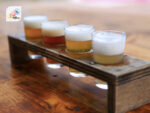
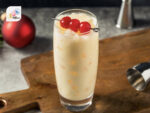
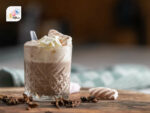

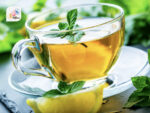
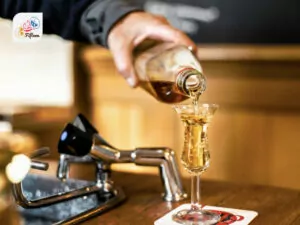
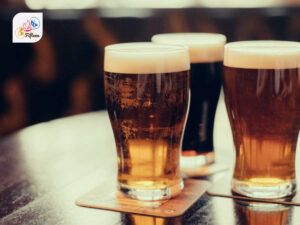
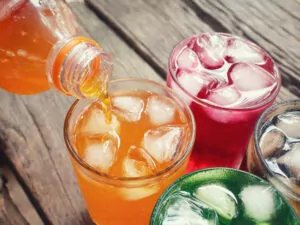
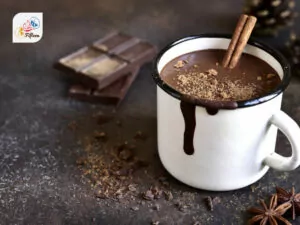
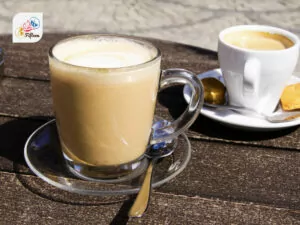
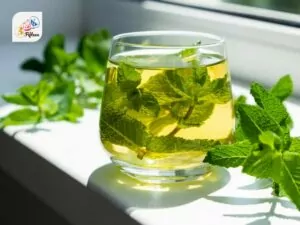
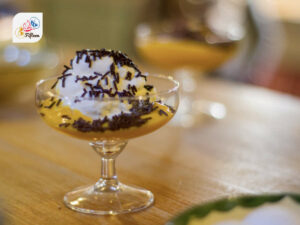
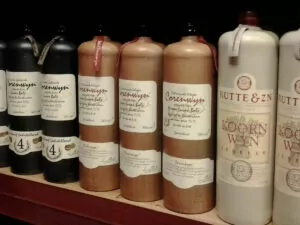
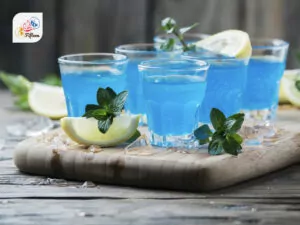
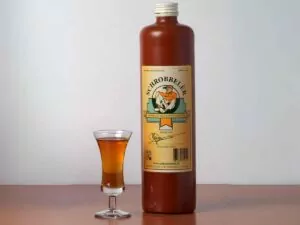
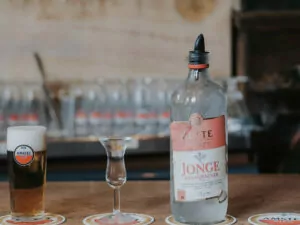
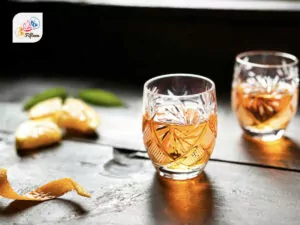
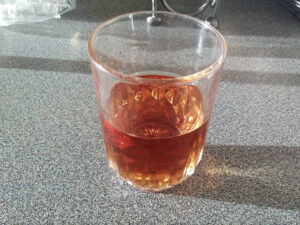
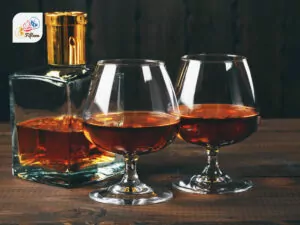
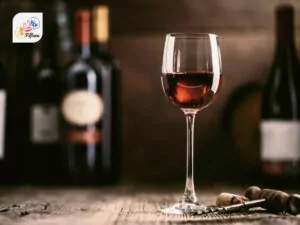
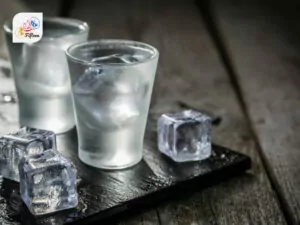
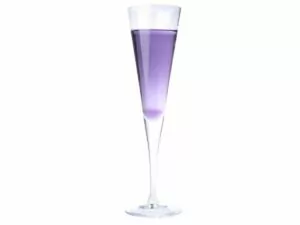
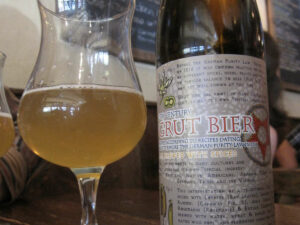
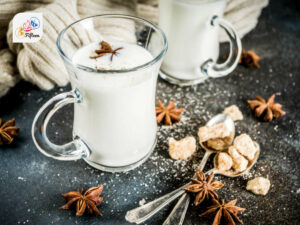
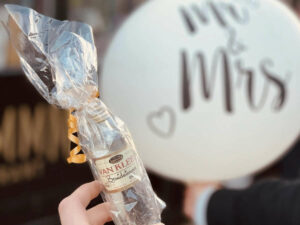
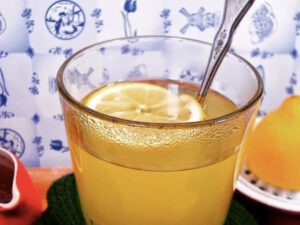
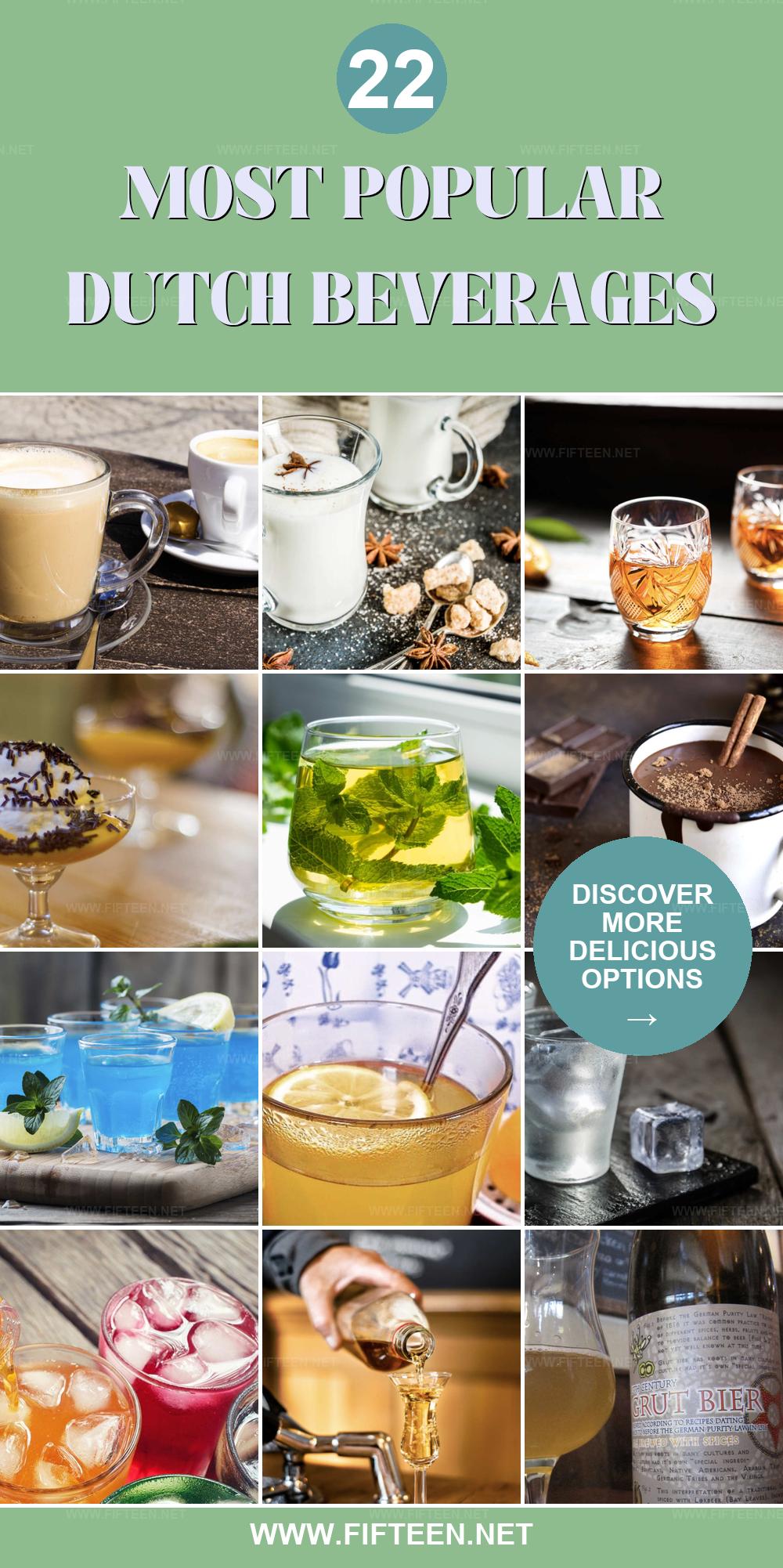
Jamie Scott
Editor in Chief, Senior Content Writer
Expertise
Home Cooking, Meal Planning, Recipe Development, Baking and Pastry, Food Editor, Cooking-video Maker, Western Food Evaluation Expert
Education
Le Cordon Bleu College of Culinary Arts
Local Community College, New York, NY
Jamie Scott is a skilled culinary expert and content creator specializing in Western cuisine. With over 15 years in the culinary field and formal training from Le Cordon Bleu, Paris, Jamie deeply understands how to blend nutrition with delicious flavors. His passion for cooking matches his commitment to making healthy eating accessible and enjoyable.
On Fifteen.net, Jamie brings a fresh perspective to classic dishes and beverages, offering readers insightful recipes, cooking tips, and a fresh view on meal planning that emphasizes taste, health, and simplicity.